Chapter 12. Jupiter and Saturn's Dynamic Atmospheres
12.1 Introduction

Author: Janelle M. Bailey, University of Nevada, Las Vegas
Editor: Beth Hufnagel, Anne Arundel Community College

The goals of this module: After completing this exercise, you should be able to:
- Describe the properties of Jupiter's and Saturn's atmospheres.
- Explain why scientists think such properties are observed in the atmospheres of Jupiter and Saturn.
In this module you will explore:
The continuous raging storms in the atmospheres of Jupiter and Saturn, and the inferred reasons they exist.

Why you are doing it: The hurricane-force winds on Jupiter and Saturn surprised scientists and are another example of how advances in astronomy are frequently driven by observations, not theories. The energy flows revealed important clues to the fascinating chemistry and structure of the invisible layers below.
12.2 Background
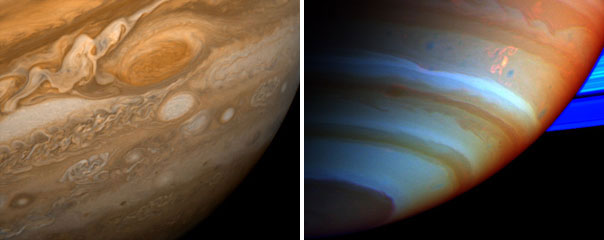
If you've ever seen either of these giants through a small telescope, you know that they are immediately recognizable. (Don't pass up the chance if you get it!) However, more detailed images of Jupiter and Saturn taken from space have revealed that both exhibit a range of colors and patterns in their atmospheres. What causes such features? How do they form and evolve over time? These are the questions that you will explore in this module.
12.3 Features of Jupiter's Atmosphere
Close-up images of Jupiter, taken as the Voyager, Pioneer, and Cassini spacecraft flew by Jupiter on their way to Saturn, show a great deal of variation in Jupiter's atmosphere - it does not have a uniform color or appearance. Rather, we can see that Jupiter has stripes or bands, parallel to the planet's equator, that seem to alternate between darker and lighter colors. The darker bands, which tend to be reddish or brown in color, are called belts, while the lighter-colored bands are known as zones.
Below is a video of Jupiter as seen by Voyager 1. Use it to answer the following question.
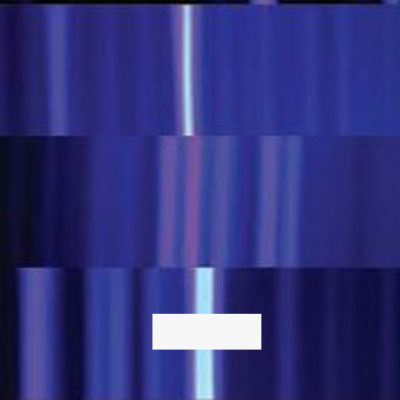
Question 12.1
ooWVPRRjpw+2UgBOHWUyNU+fllXWURr+NNihk3KgZaihopHb418HBQf2QAz3x70IhptWlQu59UhuF2nu5GVhQjBUZCyiOQpu/kRjC9P/OL4mYg8UrBVDdfEyl08e7ketsIICoOjCHJl4Mp1JI3V2lh0/Owd4472l8NV6GiuUwNupWR7HLjQ0Vg==Summary
Observations by Cassini have led scientists to new interpretations of what is happening in Jupiter's belts and zones. One suggestion is that air is rising in the belts and sinking in the zones. Another suggestion says that air in the belts is sinking and rising in the zones, where clouds are being produced. Infrared imaging shows that the belts are brighter than the zones in infrared light, indicating that the belts are lower and warmer than the zones.
12.4 Jupiter's Great Red Spot
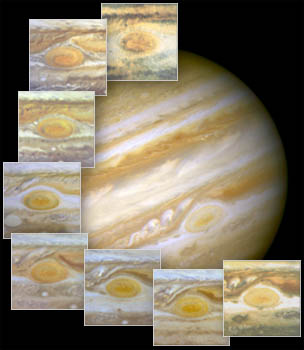
Although the belts and zones of Jupiter's atmosphere are interesting, there is another feature that has captured our attention for nearly 350 years - the Great Red Spot. First observed in 1664 by Robert Hooke, this spot has remained in Jupiter's atmosphere for centuries, whereas storms on Earth last no more than a few weeks.
Scientists think that the Great Red Spot is a huge, long-lived storm. Because it is visible to us, it must be high in Jupiter's atmosphere since clouds cover the lower levels. Careful observations show that although the storm has existed for centuries, its details have changed dramatically over time.
Below is a video of the Great Red Spot over a five-day period in 2000, taken by the Hubble Space telescope.

Question 12.2
ng2UVIorKcCVhjWieaoTMEXfWpRUjjURB2xHsQ3jAY0/92r58+I0Umv+jpofR9dLTmLsZ9xdfjLXhF2pOu34vpZe2C66VUSLpsYgqq+Afs+KPyNb8rwkzVuviZyeiDWlZUB1q4NqBDQxdOtngxqtmOYH/b91jqpXAinQNtHQrNPkyb8PlkWyvG0BzrTAi+j8h4gRizbNE8RR5rjuyZzaJv6NKbhQyVtYpaMv1YMLCamukaYU0A4DnpVIAiwM8+WrWLQLOiJ/ydia5QijGsBtjCaTOHqZ7ZSIxke3363byn70rAUvauZdfyt0g5wERLJ+dU0DhvEGNcrW0xcEoenFbIg/GFlkQkERmMPAhrGAsEdcG5q/9rdptdZAQrCtj+OzEOOktnt28VI=12.5 Features of Saturn's Atmosphere
Spacecraft images show that Saturn, like Jupiter, has alternating dark and light bands - belts and zones, respectively - in its atmosphere. However, they are fainter than those on Jupiter. Furthermore, Saturn has no long-lived storm system like Jupiter's Great Red Spot.
Below is a video of Saturn as seen from the Hubble Space Telescope.
These false-color views of Saturn's rotation have been used to track storms on the giant planet. Here they give a revealing overall look at the planet's rotation.
Question 12.3
mG1rXMZAcW1HwKTF3BEopbFhmyl80C/d3XlOSdeOh4M3JKjau/act0AvsSp9nfpSa3899zjEfPCGJ+etnAA9LhP0JONuITrrzWH+cHOQwZM0K9Xcv80yyCVSIlM5ZkEXCZz4M60/Cj8xQfrXXmlQb6AVGwO393yAoRyhFkAjE+gaHdKrQJSgkHjzApcLGfUBADB7Tu9AaugA+qNhZ9ksIIBykOJ+U4c07UapZobJFGvAf+vT4rE+4mf6JaaeFJe7mU+CnesWPnmt3g2iR0VisBmJ5A+nH87/vw4ZqgoB+ovOsyWYMnZ3Ke2XERuBQQShPAO+7LDtXFd5cY/NuUvD2wfq+mBt3OYjBGXGNdzMMnBxiXdZVffsdw==12.6 Cloud Layers
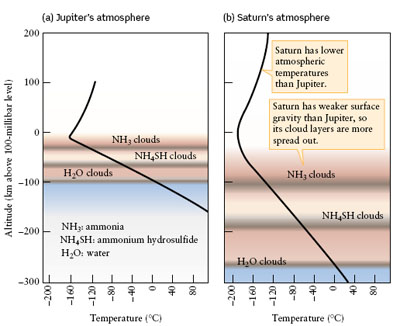
Using observations from spectroscopyas well as computer modeling, scientists have concluded that both Jupiter and Saturn have three main cloud layers, each layer with a different primary composition. Lowest in the atmosphere is water (H2O), frozen into crystals. Above the water layer is another layer of crystals, but these are made of ammonium sulfide (NH4SH). The outermost layer of the atmosphere is made of frozen ammonia (NH3). For Jupiter, these three layers comprise only about the top-most 75 kilometers of the atmosphere, but for Saturn they are about 300 kilometers deep.
Scientists know that the colors of these cloud layers depend in part on their temperature and therefore their depth. The deepest clouds are warmer and tend to be brown in color; white clouds are found in the central layer while red clouds are found at the highest levels of the atmosphere. However, the crystals found in these clouds (H2O, NH4SH, and NH3) are all white - thus the exact cause of the colors, and why Saturn's colors appear muted compared to those of Jupiter, are yet to be determined.
Question 12.4
mm/F9LO8lkc8mDmb/MvzSMzVEykL6hZ72DBLamDh015R9jLBmdYUrwkr7TVqimax6R9rCbWefsUre2mOqS/oUAs8Xx0o1oNMrsVD76vey2+mXepVqU6chEQ5QYzKRi6FiJxwXpgicjKOvn268j5YD7lZp8UV0WOJIU7oUrPcji9VvZDulz1PR9RwlGEtE8O10mOtdkVNvWBUqBv2395KySz62KAXUeccSk1Og0FkP1GTs+990c0Tk5NhEzV6ZXMohNrW3fewxGRZhGkGC8fWEBmJuo0eGDFOECxzw8srcZSQauwmqo003uqb/JRC2W9h+qJuYWtOXwyIj5VOfY+nzNByUUUZXzXXE37AisYD6uFfBNH/SXeui+w4XsPkm+J2GemxdakIjCz8Nj01zRFlHquJbSokDnmF4QyHBDWu3CitzlfacRwHYjHTyohG6btb12.7 Atmospheric Motions
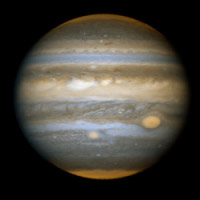
The Earth's spin and the Sun's energy put its atmosphere into motion giving us predictable weather patterns. Although their spin and the Sun's energy also affects the atmospheres of Jupiter and Saturn, for them there is another important reason for their violent turbulence.
It turns out that Jupiter actually emits (in the form of infrared light) about twice as much energy as it absorbs from the Sun. This energy is thought to be left over from the planet's formation, more than 4.5 billion years ago. As gravity caused material to come together, the energy of the material was raised and eventually stored in the center of the planet. This internal energy, slowly radiating from Jupiter, causes the lower regions of the atmosphere to warm; bubbles of warm gas then rise while other cooled and denser regions sink, in a continual convection cycle of slow-motion boiling.

Saturn also emits more energy than it receives from the Sun - but not in the amounts we expected. The extra energy from Saturn may come from falling helium. In the cooler upper atmosphere, helium condenses into liquid form and "rains". The liquid will convert its gravitational energy into additional internal energy as it falls. The thermal energy slowly leaks out as infrared light over billions of years.
These vertical motions of the atmospheric gases are likely the cause of the belts and zones seen in the pictures. The rapid rotations of the planets, however, cause an additional motion of the atmospheres in an east-west direction. These zonal winds can exceed 500 km/h on Jupiter. You would think that they would slow down on the colder Saturn, but they rage there at up to 1800 km/h! For comparison, the strongest hurricane to hit the US mainland (in 1935, in the Florida Keys) was packing winds of only 300 km/h.
12.8 Quick Check Quiz
Indepth Activity: Jupiter and Saturn's Dynamic Atmospheres